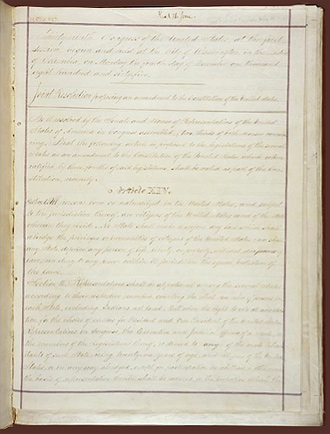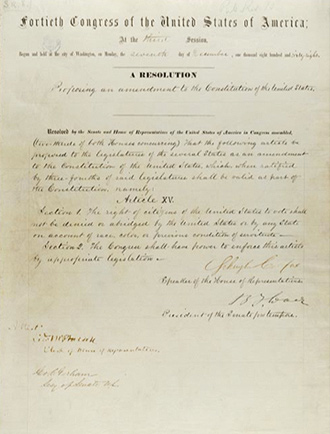
Source: 14th Amendment, Our Documents
The quest for civil rights spans across American history; there have always been segments of the population in American society who have been deprived of their rights. Throughout the course of United States history, the federal government has worked to define and protect the rights of all citizens based on the U.S. Constitution.
In this resource, you will examine the Civil Rights Acts of 1957, 1964, and 1968 and analyze selected excerpts to determine whether the acts promote equality. First, you will need to examine some of the documents that serve as the origins of the civil rights legislation.

Source: 14th Amendment, Our Documents
Congress passed three amendments at the end of the Civil War. These amendments, also called the Civil War Amendments, were written to guarantee equal civil rights to freed slaves after the war. The major provision of the 14th Amendment was to grant citizenship to "All persons born or naturalized in the United States," thereby granting citizenship to former slaves. Another provision of the 14th Amendment was "nor shall any State deprive any person of life, liberty, or property, without due process of law; nor deny to any person within its jurisdiction the equal protection of the laws." Although the 14th Amendment extended equal protection to freed slaves, these rights were not recognized by all states.

Source: 15th Amendment, Our Documents
The 15th Amendment was the first constitutional amendment to extend voting rights. The clause “The right of citizens of the United States to vote shall not be denied or abridged by the United States or any State on account of race, color, or previous condition of servitude” gave African-American men the right to vote.
The 13th, 14th, and 15th Amendments can also be referred to as the Reconstruction Amendments. During Reconstruction, some former Confederate states were required to ratify these amendments as part of their plan to rejoin the Union. These amendments were the root of the civil rights movement in America. The intent of the amendments was to protect basic civil rights for all Americans under the U.S. Constitution. However, some of the southern states violated those rights; thus, the struggle for civil rights began.